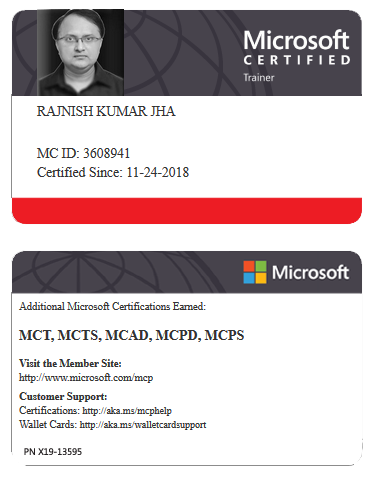Release management for GitHub Actions
Releasing and testing a GitHub Action are critical steps for ensuring the action works as intended and is stable for users. Here's a detailed breakdown of the process, including best practices for release management and testing.
To release a GitHub Action, you need to make it available to users in a reliable and version-controlled way. This is typically done through tags, SHA-based hashes, and branches.
1. Tags
Tags are used to create specific, immutable versions of your action. Users can reference a tag to ensure they always get the same version of the action.
Why Use Tags?
Provides a stable reference point for users.
Helps track and maintain multiple versions of your action.
Follows semantic versioning (
v1.0.0,v1, etc.).
Example of Tagging a Release:
xxxxxxxxxx21git tag -a v1.0.0 -m "Initial release"2git push origin v1.0.0Workflow Usage with Tags:
xxxxxxxxxx11usesyour-username/your-action@v1.0.02. SHA-Based Hashes
Each commit in GitHub has a unique SHA hash, which can be used to reference a specific state of the code.
Why Use SHA?
Ensures maximum stability by using an exact reference.
Useful for debugging or internal workflows.
Workflow Usage with SHA:
xxxxxxxxxx11usesyour-username/your-action@<commit-sha>`3. Branches
Actions can also be referenced by branches (e.g., main or develop). This is useful during development or for always using the latest updates.
Why Use Branches?
Good for testing and development.
Not ideal for production workflows since branch content can change.
Workflow Usage with Branches:
xxxxxxxxxx11usesyour-username/your-action@mainRelease Workflow Example
Prepare the Release:
Ensure your action is working and includes proper documentation in the
README.mdfile.Update the
action.ymlfile with version-specific details.
Tag the Release:
xxxxxxxxxx21git tag -a v1.1.0 -m "Added new feature"2git push origin v1.1.0Create a GitHub Release:
Go to the Releases section in your repository.
Click Draft a new release.
Associate it with a tag (e.g.,
v1.1.0) and provide release notes.
Update the
v1** Tag (Optional):**Point
v1to the latest minor release for users who want to stay on a stable major version:
xxxxxxxxxx21git tag -f v1 v1.1.02git push origin v1 --force
Testing an Action
Testing ensures your action behaves as expected under various scenarios.
1. Local Testing
You can test your action locally using tools like , which emulates GitHub Actions on your machine.
Install Act:
xxxxxxxxxx11brew install act # macOSRun a Workflow Locally:
xxxxxxxxxx11act -j <job-name>Benefits:
Speeds up the testing process.
Avoids consuming GitHub Actions usage limits.
2. Debugging in GitHub
You can enable debug logs during a workflow run to identify issues.
Enable Debugging:
Set the ACTIONS_STEP_DEBUG secret to true in your repository.
xxxxxxxxxx21env2 ACTIONS_STEP_DEBUGtrue3. Unit Testing
Write unit tests for scripts used in your action.
For JavaScript/TypeScript Actions:
Use a testing framework like Jest:
xxxxxxxxxx11npm install jest --save-devExample Test File:
xxxxxxxxxx31test('basic functionality', () => {2 expect(1 + 1).toBe(2);3});For Docker Actions:
Use docker run commands to test your containerized action locally.
4. Test Workflows
Create a separate GitHub workflow to test your action in a controlled environment.
Example Test Workflow:
xxxxxxxxxx151nameTest Action2on3 push4 branches5main6jobs7 test8 runs-onubuntu-latest9 steps10nameCheckout Repository11 usesactions/checkout@v312nameTest My Action13 uses./ # Uses the local action14 with15 input-name"Test Input"5. Matrix Testing
Use matrix strategies to test your action across multiple environments.
Example Matrix Test:
xxxxxxxxxx121jobs2 test3 runs-onubuntu-latest4 strategy5 matrix6 node-version12 14 167 steps8usesactions/setup-node@v39 with10 node-version$ matrix.node-version 11nameRun My Action12 uses./ # Local action reference6. Test Edge Cases
Validate against incorrect inputs or missing parameters.
Ensure proper handling of errors and failures.
Best Practices for Releasing and Testing
Semantic Versioning: Use meaningful tags (
v1.0.0,v2.1.0).Documentation: Provide clear examples and inputs in the
README.md.Automated Tests: Set up CI workflows to validate your action on every push.
Error Handling: Add meaningful error messages and debug information.
Backward Compatibility: Maintain compatibility with older versions unless a major release breaks it.
Summary
By following these steps, you can ensure your GitHub Action is reliable, well-documented, and easy to use.






















Leave a Reply